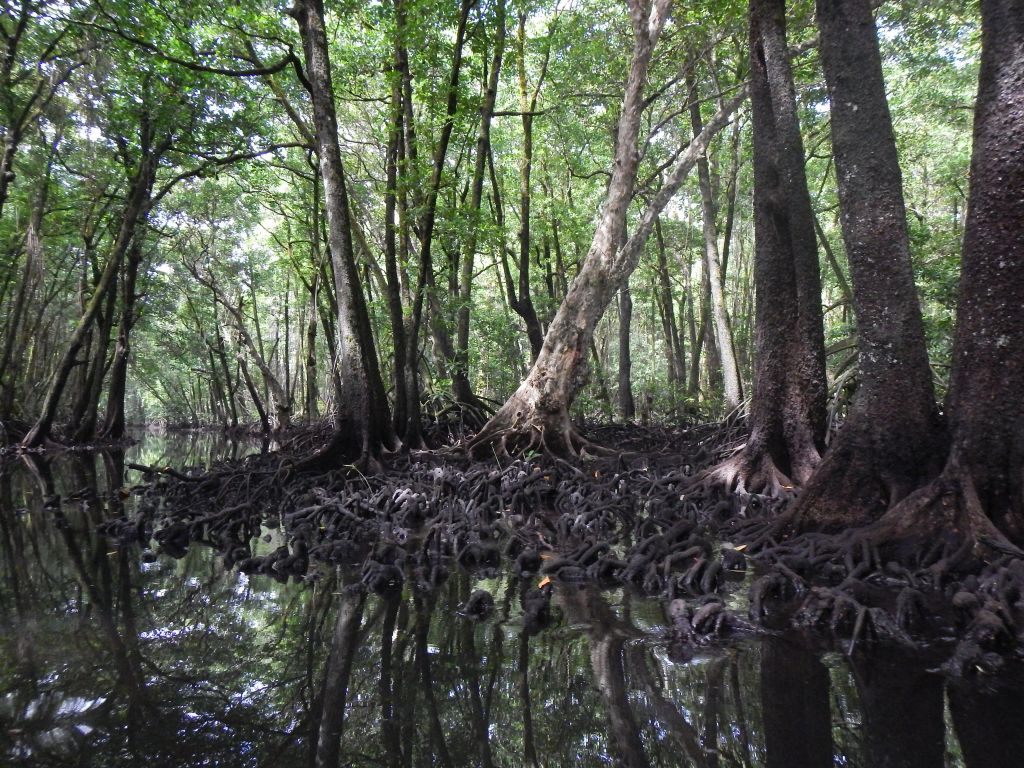Sea-level rise vulnerability of mangrove forests on the Micronesian island of Pohnpei

The mangrove forests across the Federated States of Micronesia provide critical resources and contribute to climate resilience. Locally, mangrove forests provide habitat for fish and wildlife, timber, and other cultural resources. Mangrove forests also protect Micronesian communities from tropical cyclones and tsunamis, providing a buffer against powerful waves and winds. Mangrove forests in Micronesia can store 700–1,800 metric tons of carbon per hectare (Donato and others, 2011), contributing to the estimated 5–10 billion metric tons of carbon stored by mangroves around the world (Alongi, 2018). This carbon storage is essential for global climate resilience.
Mangrove forests and the benefits these ecosystems provide are threatened by accelerating sea-level rise and human activities. Healthy mangrove forests are resilient systems and have kept pace with some amounts of sea-level rise, but rapid sea-level rise could outpace the mangroves’ ability to adapt. Degraded mangroves are at greater risk where natural processes have been altered. Overharvest and clearing of timber, infrastructure development, and altered hydrology are just a few of the human activities that can damage mangrove forests.
PROJECT DETAILS
TYPE:
Factsheet
PEOPLE:
Karen Thorne
Research Ecologist, USGS Western Ecological Research Center
Kevin Buffington
Ecologist, USGS Western Ecological Research Center

